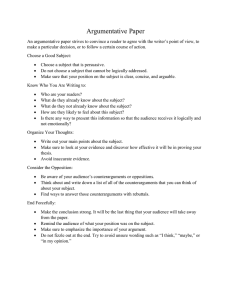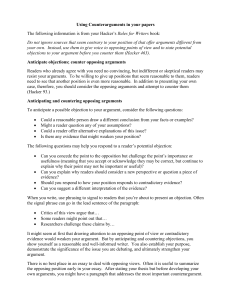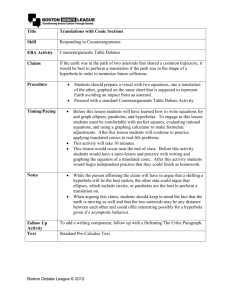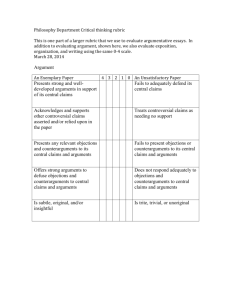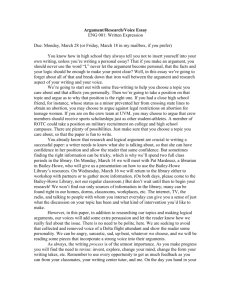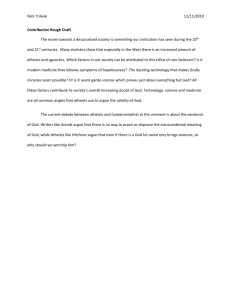Counterarguments are the acknowledgements of
advertisement
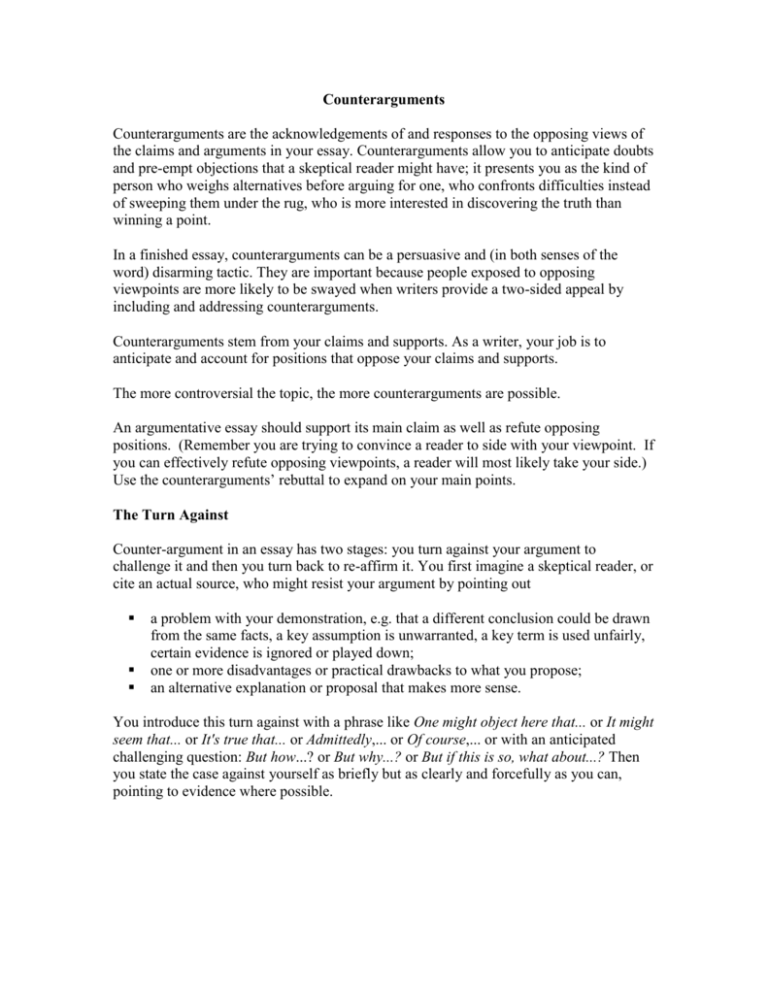
Counterarguments Counterarguments are the acknowledgements of and responses to the opposing views of the claims and arguments in your essay. Counterarguments allow you to anticipate doubts and pre-empt objections that a skeptical reader might have; it presents you as the kind of person who weighs alternatives before arguing for one, who confronts difficulties instead of sweeping them under the rug, who is more interested in discovering the truth than winning a point. In a finished essay, counterarguments can be a persuasive and (in both senses of the word) disarming tactic. They are important because people exposed to opposing viewpoints are more likely to be swayed when writers provide a two-sided appeal by including and addressing counterarguments. Counterarguments stem from your claims and supports. As a writer, your job is to anticipate and account for positions that oppose your claims and supports. The more controversial the topic, the more counterarguments are possible. An argumentative essay should support its main claim as well as refute opposing positions. (Remember you are trying to convince a reader to side with your viewpoint. If you can effectively refute opposing viewpoints, a reader will most likely take your side.) Use the counterarguments’ rebuttal to expand on your main points. The Turn Against Counter-argument in an essay has two stages: you turn against your argument to challenge it and then you turn back to re-affirm it. You first imagine a skeptical reader, or cite an actual source, who might resist your argument by pointing out a problem with your demonstration, e.g. that a different conclusion could be drawn from the same facts, a key assumption is unwarranted, a key term is used unfairly, certain evidence is ignored or played down; one or more disadvantages or practical drawbacks to what you propose; an alternative explanation or proposal that makes more sense. You introduce this turn against with a phrase like One might object here that... or It might seem that... or It's true that... or Admittedly,... or Of course,... or with an anticipated challenging question: But how...? or But why...? or But if this is so, what about...? Then you state the case against yourself as briefly but as clearly and forcefully as you can, pointing to evidence where possible. The Turn Back Your return to your own argument—which you announce with a but, yet, however, nevertheless or still—must likewise involve careful reasoning, not a flippant (or nervous) dismissal. In reasoning about the proposed counter-argument, you may refute it, showing why it is mistaken—an apparent but not real problem; acknowledge its validity or plausibility, but suggest why on balance it's relatively less important or less likely than what you propose, and thus doesn't overturn it; concede its force and complicate your idea accordingly—restate your thesis in a more exact, qualified, or nuanced way that takes account of the objection, or start a new section in which you consider your topic in light of it. This will work if the counter-argument concerns only an aspect of your argument; if it undermines your whole case, you need a new thesis. Argument: Dad, I would like to borrow your Jaguar for next Saturday’s basketball game. I need to borrow your car because I want to look cool for my new crush. Counterargument (Anticipating Dad’s response): Now I know that you might say “No” because I got in an accident last time I borrowed your Jag. Concession: I really understand your position especially because my car insurance went up significantly. Rebuttal: However, I will drive carefully and…
